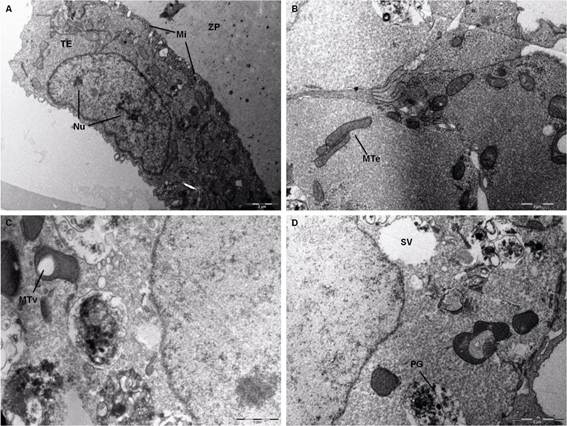In cattle, embryo development is characterized by the appearance of two distinct cell layers, the trophectoderm and the inner cell mass. The latter will undergo differentiation to form the embryonic disc consisting of the epiblast and hypoblast. The aim of this study was to ultrastructurally characterize the bovine embryo from different in vitro production techniques, with emphasis on trophectoderm and inner cell mass cells. Bovine embryos on day 7 (conception = D1) of pregnancy, derived via in vitro production techniques, were fixed for light and transmission electron microscopy processing. Results suggested that embryos produced by nuclear transfer of somatic cells and parthenogenesis showed significant changes in macroscopic and microscopic structure. Size was reduced, and the inner cell mass had no defined shape. Furthermore, organelles responsible for the absorption processes, communication, growth, and cellular metabolism were fewer and had changes in shape, when compared to results in embryos produced by in vitrofertilization. We concluded that embryos produced by parthenogenesis and SCNT exhibit morphological differences when compared with IVF embryos, such as undeveloped blastocoel, poorly defined distribution of ICM, and morphological differences in organelles.
embryo; blastocyst; in vitro production; ultrastructure

 Thumbnail
Thumbnail
 Thumbnail
Thumbnail
 Thumbnail
Thumbnail
 Thumbnail
Thumbnail
 Thumbnail
Thumbnail




